
by Lauren Richardson
Sustainability Manager at Green Badger
Indoor air quality inspections continue to be a challenge for project teams, so Green Badger has put together this Indoor Air Quality Inspection Checklist to help teams stay on top of IAQ inspections and ensure compliance with LEED requirements.
PROJECTS CANNOT GET LEED CERTIFIED WITHOUT THESE INSPECTIONS.
Clearly, without processes in place to make sure that indoor air quality inspections are being done and date/time stamped photos are being captured, this put teams at risk of not earning the LEED IEQc4: Indoor Air Quality Assessment credit. This post highlights our Indoor Air Quality Inspection Checklist for project teams to use to make sure IAQ reports get done without being a hassle!
Why using the Green Badger app for IAQ Inspections is so important: LEED requires ANNOTATED photos for indoor air quality inspections and the Green Badger app allows you to do that. You won’t see the date/time stamp until you export!
When you start your project, here are Green Badger’s recommendation.
- Determine your point person for monthly IAQ inspections – is it your superintendent, associate, is it you?
- Add that person as a user in your project team in Green Badger
- Make sure that person has downloaded the FREE Green Badger app (go to the app store, search Green Badger, download – it works on ipad, iphone/android)
- Put a note on your calendar of a ballpark estimate of when ductwork will show up! Start your inspections then.
Thanks to our project teams at Evans General Contractors, Core Construction, Suffolk for providing photo examples of the following IAQ measures!
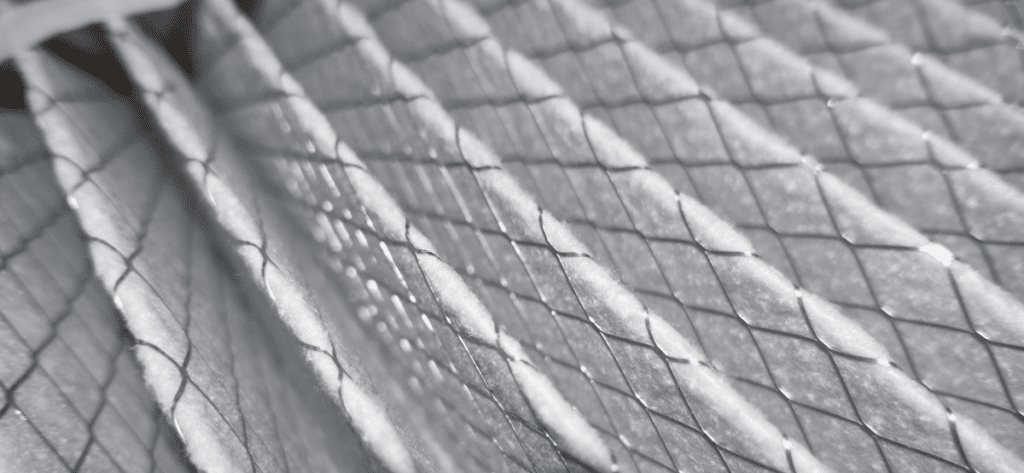
Indoor Air Quality Inspection Measures
1. HVAC Protection
First up on the list for indoor air quality inspections in HVAC protection. This means keeping contaminants out of the HVAC system, not running permanently installed equipment if possible, or maintaining proper filtration if it is used.
Goal: keep contaminants out of the HVAC system.
- Do not run permanently installed equipment if possible; maintain proper filtration if used
- Do not store materials in mechanical rooms to reduce potential debris and contamination to mechanical systems
- MERV 8 filters at each return air opening
- Track filters during construction/before installation
- Seal all ductwork, registers, diffusers, and returns with plastic when stored on site or not in service
- Seal unfinished runs of ductwork at the end of each day
- Replace filtration media (per manufacturer recommendations) before occupancy
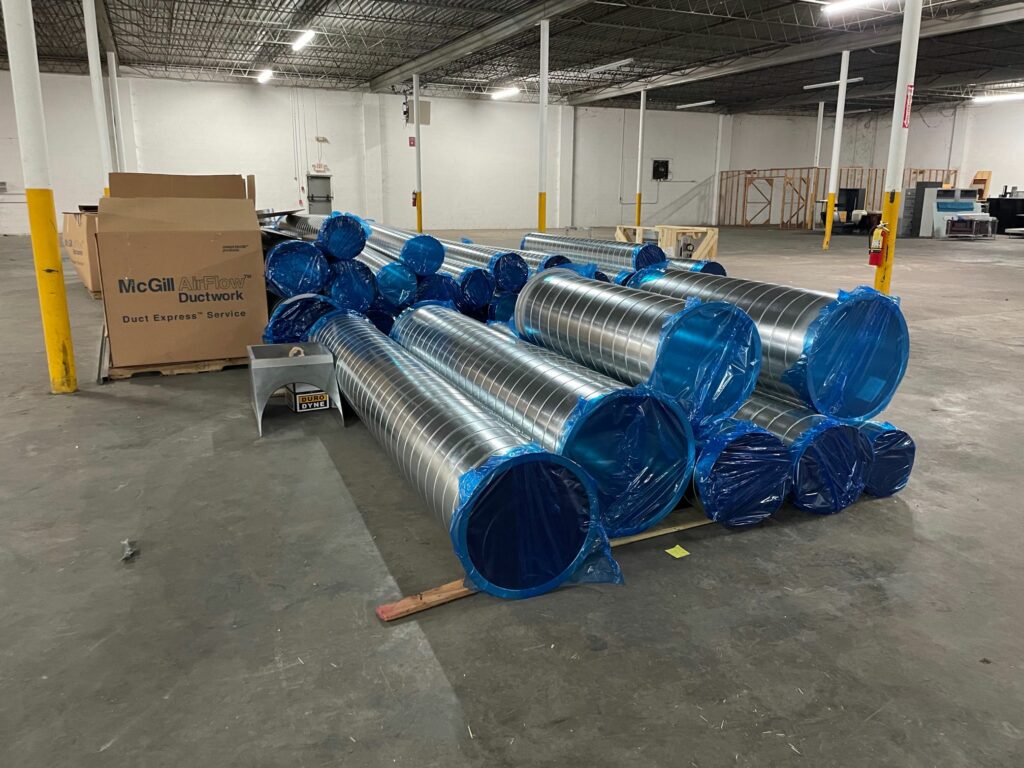

2. Source Control
Goal: keep sources of contaminants out of building & eliminate any that do enter
- Use low-toxicity and low-VOC products as much as possible (includes cleaning products)
- Create protocols for the use of any high-toxicity materials; Isolate areas where these are installed and use temporary ventilation for that area
- Prevent exhaust fumes (from idling vehicles, fossil-fueled tool) from entering building
- Use electric or natural gas alternatives for gasoline and diesel
- Turn equipment off when not being used
- Keep containers of wet products closed
- Cover/ seal containers of waste materials
- Enforce no-smoking job site policy
Refer to your company’s Indoor Air Quality Management Plan for guidelines such as :
- Communication Guidelines
- Quality Control
- List of all filtration media
Refer to LEED Scorecard/Architect for:
- FLUSH OUT requirements if required
- Indoor Air Quality TESTING if required
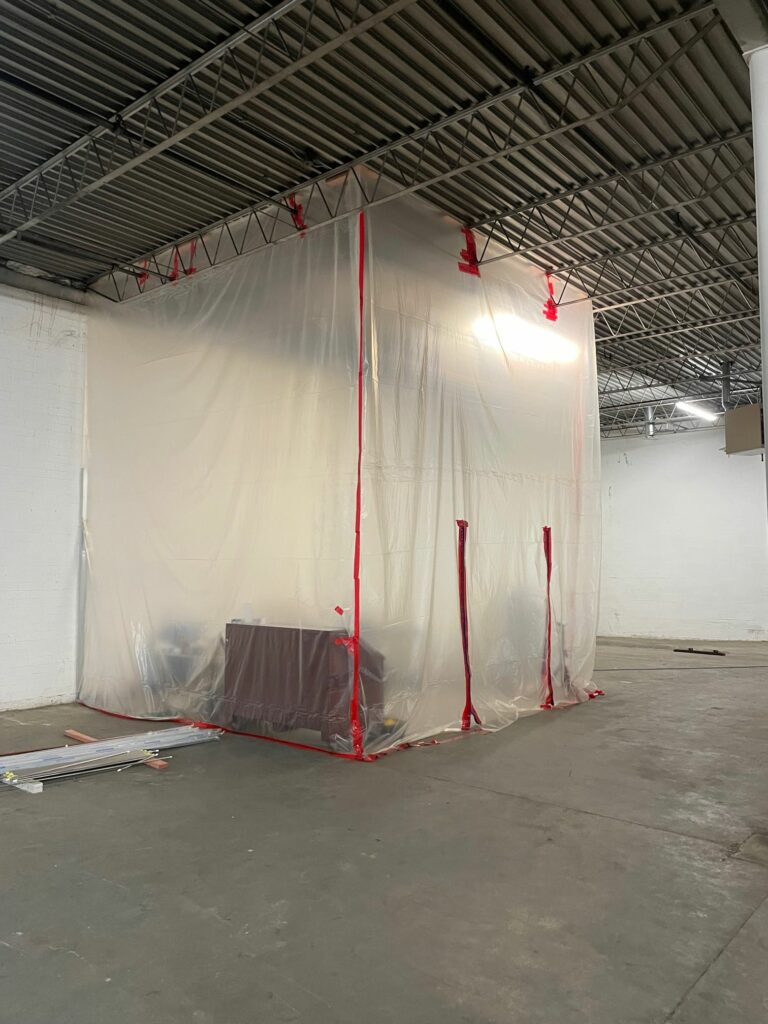
3. Pathway Interruption
Goal: prevent contaminated air form circulating from cutting concrete/wood; sanding drywall/installing VOC emitting materials/other activities that affect IAQ
- Provide dust curtains/plastic sheeting/ temporary enclosures where needed
- Provide walk-off mats at all regularly used construction building entries
- Locate pollutant sources as far away as possible from supply ducts and areas occupied by workers
- When using VOC emitting materials ventilate
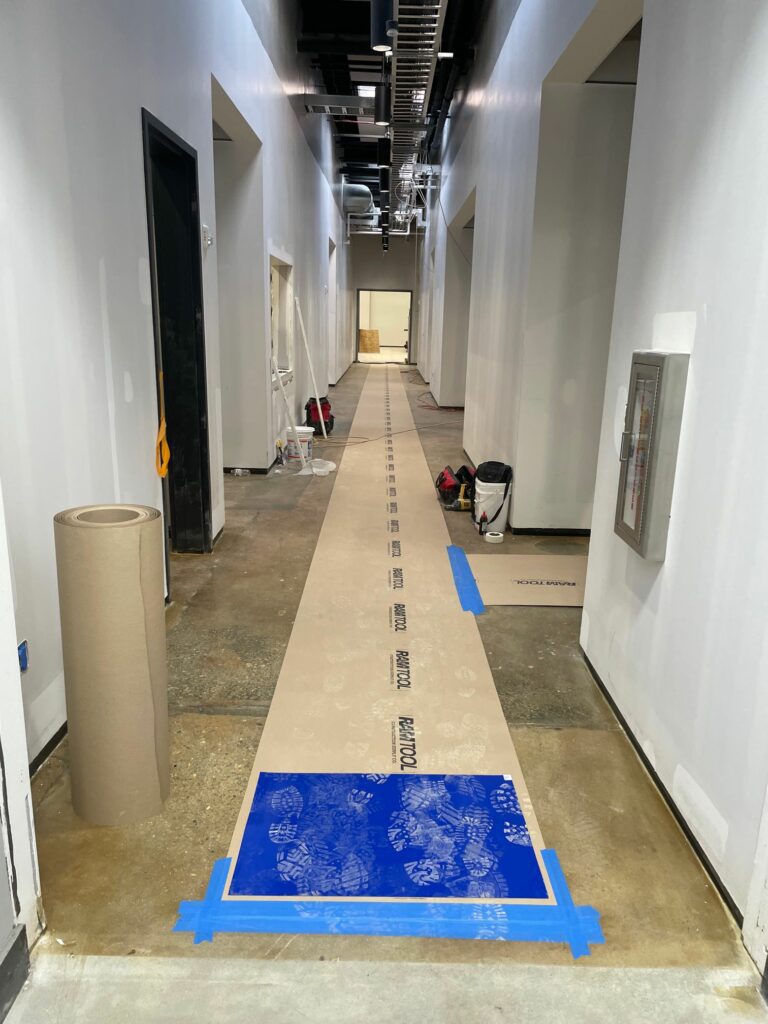
4. Housekeeping
Goal: keep a clean job site so there are less contaminants to manage
Use vacuums with high-efficiency particulate filters
Use sweeping compounds/wetting agents for dust control when sweeping
- Sweep/mop daily
- Remove any accumulated water
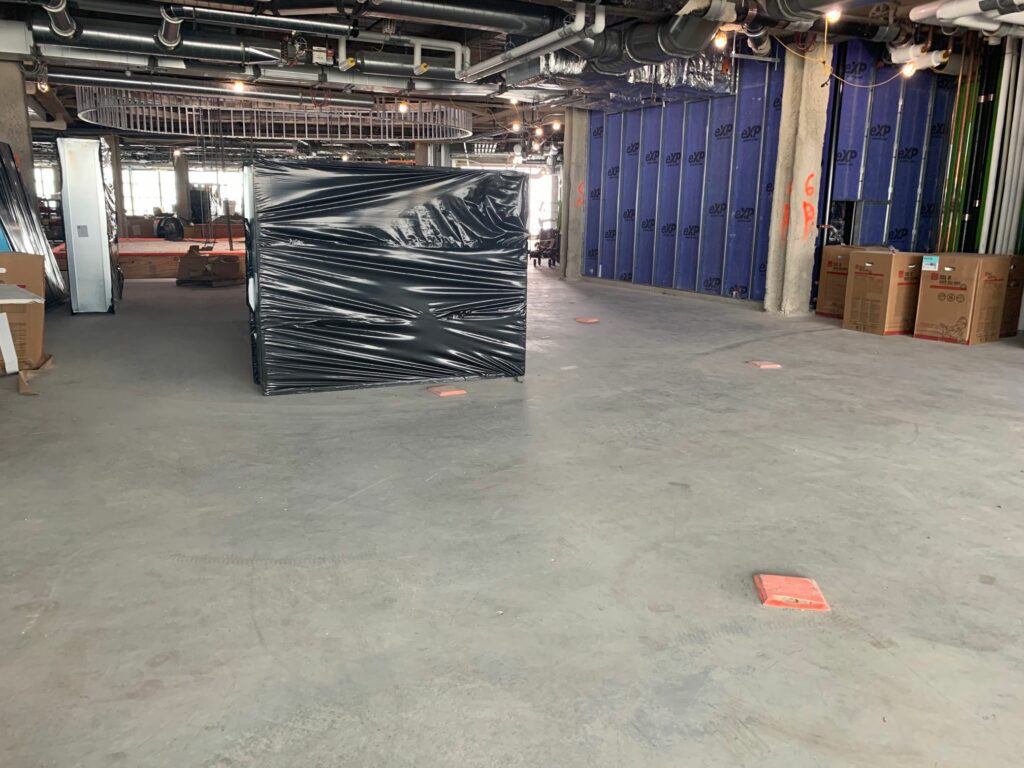
5. Scheduling
Goal: sequence construction activities to reduce IAQ problems in new construction; for major renovations, coordinate activities to minimize/eliminate disruption of operations in occupied areas
- Keep trades that affect IAQ physically isolated on-side and separated from each other by the construction schedule (ex. drywall finishing & carpet installation scheduled on different days or different areas of building)
- Remove all temporary filtration media/replace with new filters before occupancy
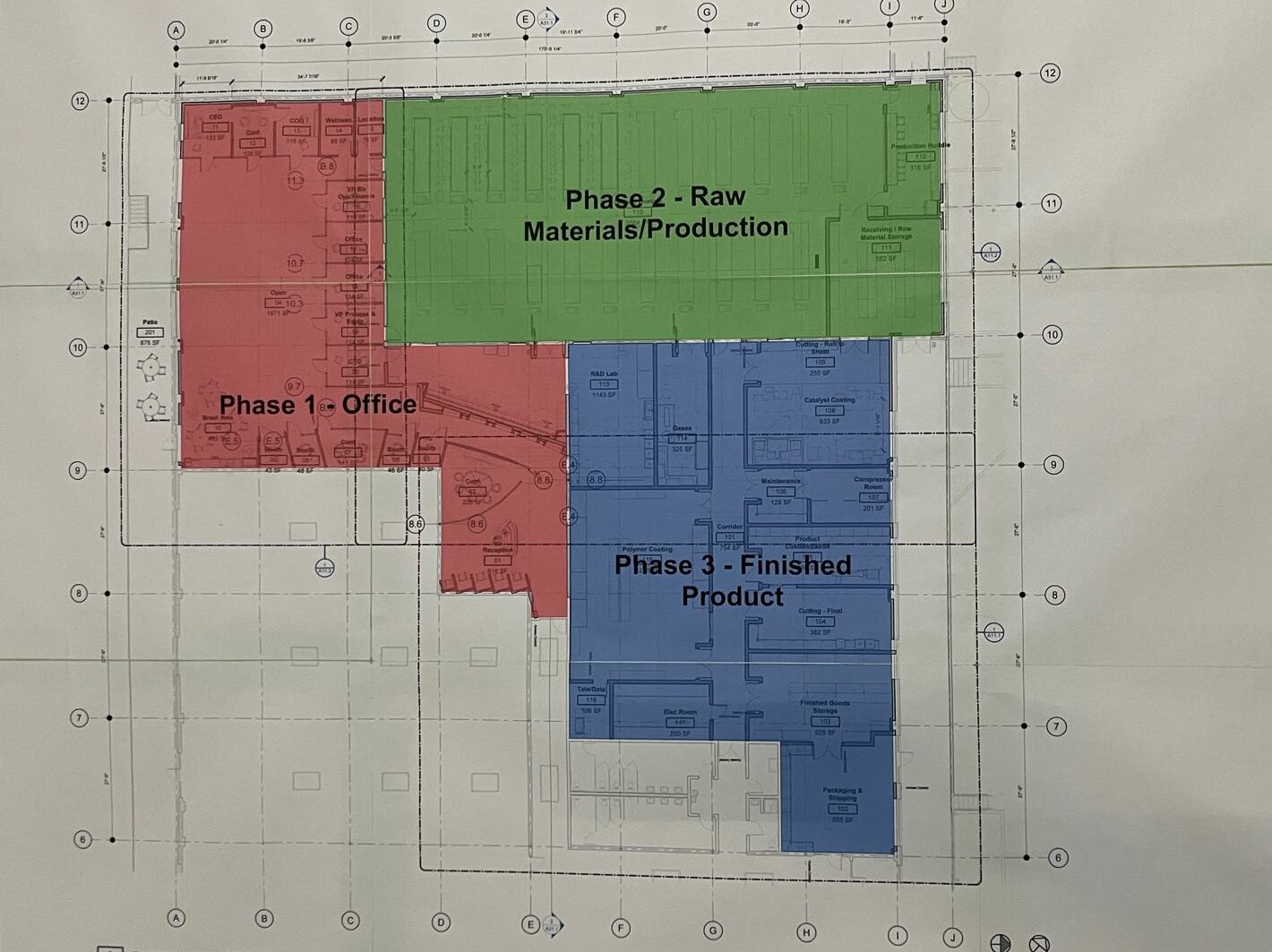
6. Absorptive Material Protection
(Covered under Source Control but helpful to spell out for LEED reviewers.)
Goal: Don’t let stuff get wet inside your building (ei. DLSGWIYB)
Ok, fine, we just made up that acronym, but it pretty much gets to the point. Water just doesn’t roll of certain materials. If those materials get wet and installed, there’s going to be a mold issue as well as an overall warranty and all things associated. So let’s keep it dry!
- Keep absorptive building materials protected from weather/moisture
- Install absorbent materials after wet-applied materials have fully cured (ex. Install carpet/ceiling tile after paints/stains are dry)
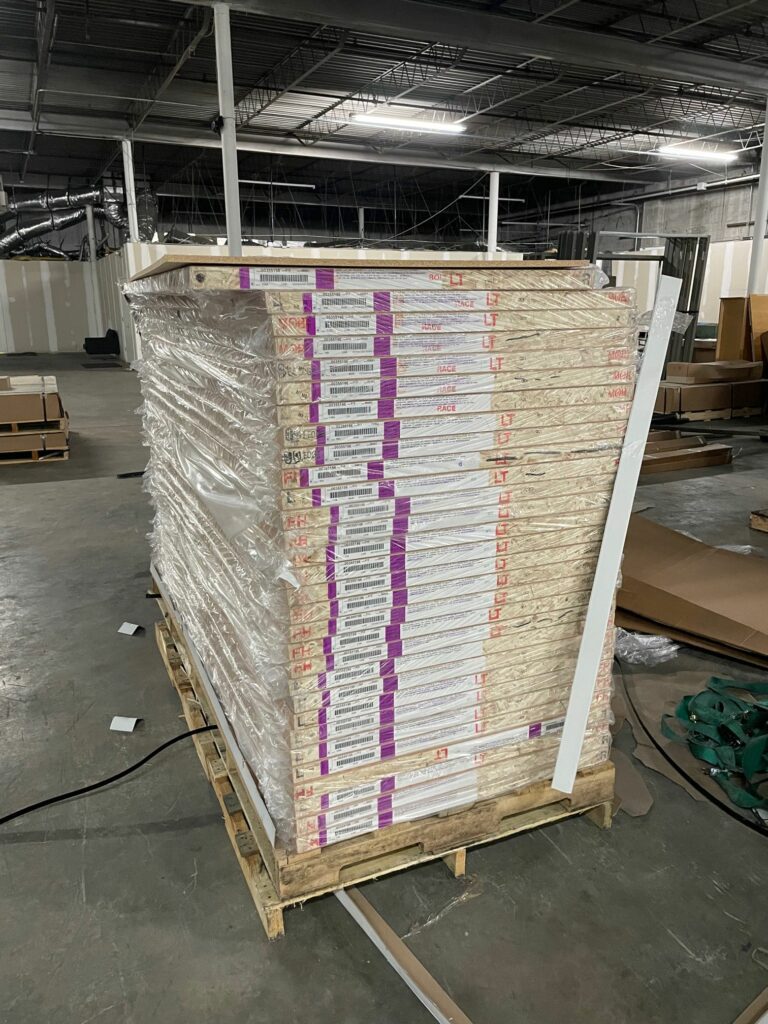

More Indoor Air Quality Inspection Examples
Additionally, here are some more examples of annotated (date/time stamped) photos tat you can take for your IAQ inspections. Date/time stamps appear on the PDF export when using the Green Badger app to manage your IAQ inspections which makes it easy to show compliance!
HVAC Protection
- Materials delivered to each unit
- Unit installed
- Duct work installed
- Diffusers/returns installed
- Filters installed
- System started up
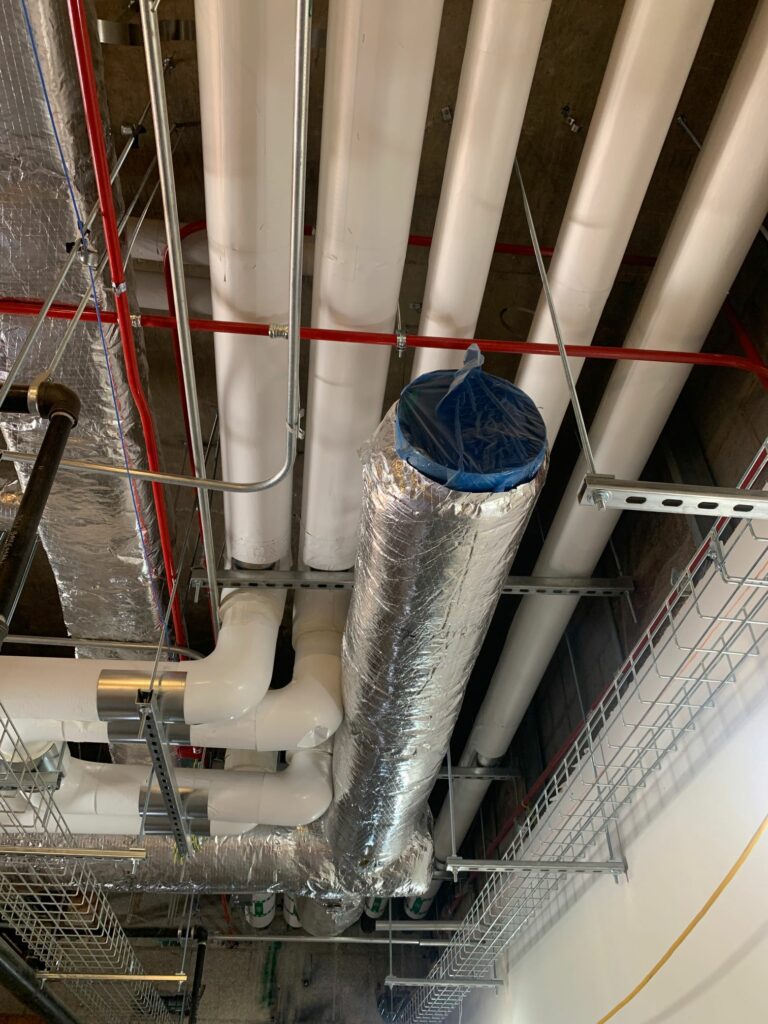



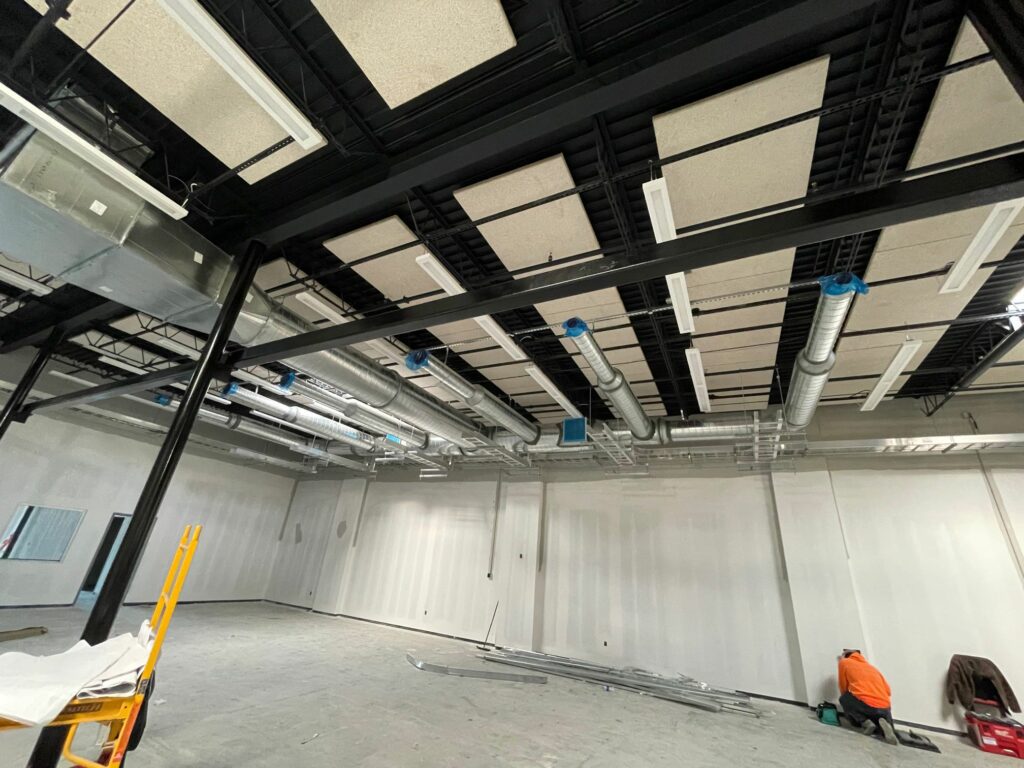

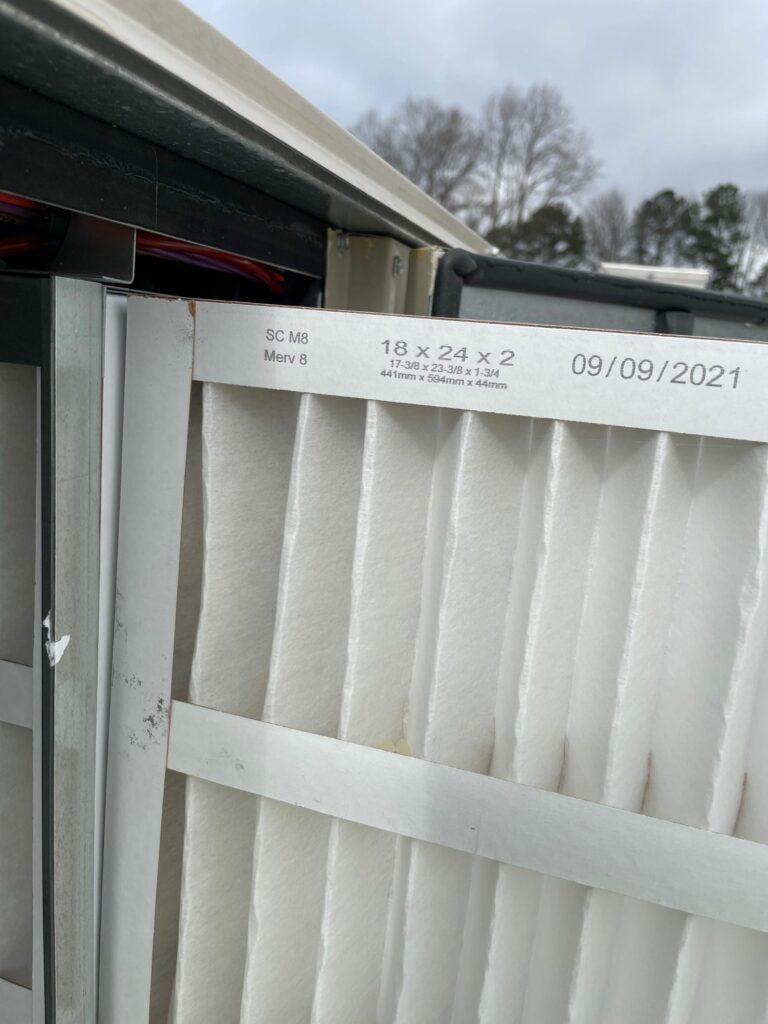

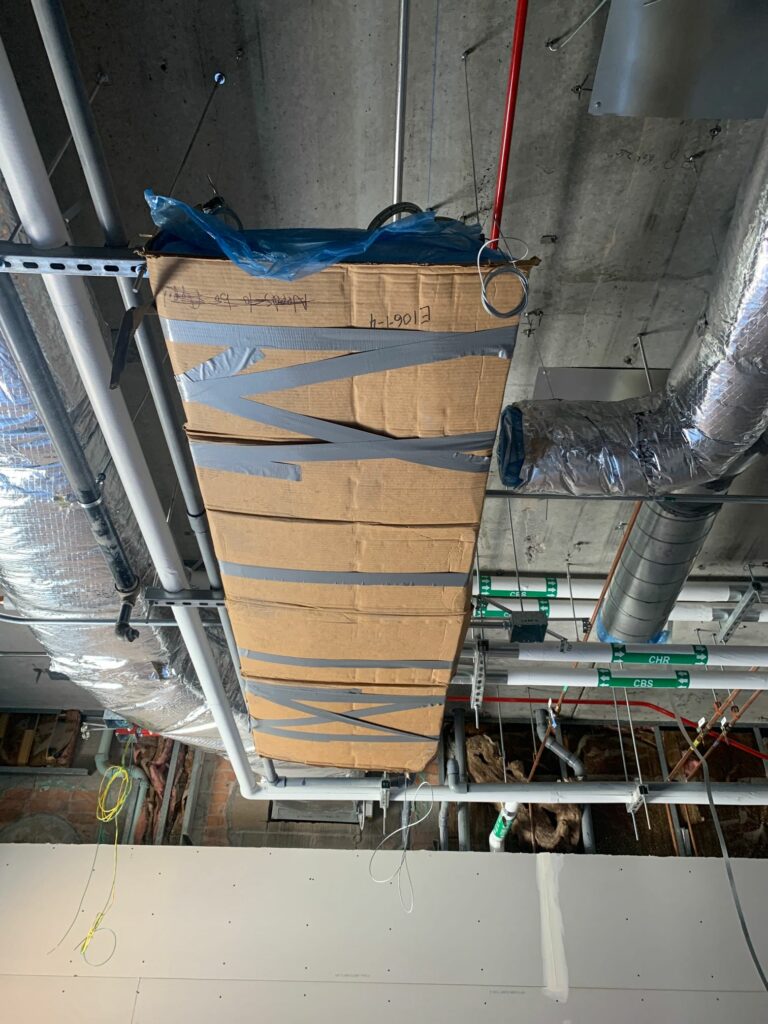



Source Control
- VOC materials in central storage/isolated areas
- Absorptive materials wrapped and kept off floor


Pathway Interruption
- Plastic sheeting/dust curtains/temporary enclosures
- Walk off mats
- Dust guard/collectors on saws/tools
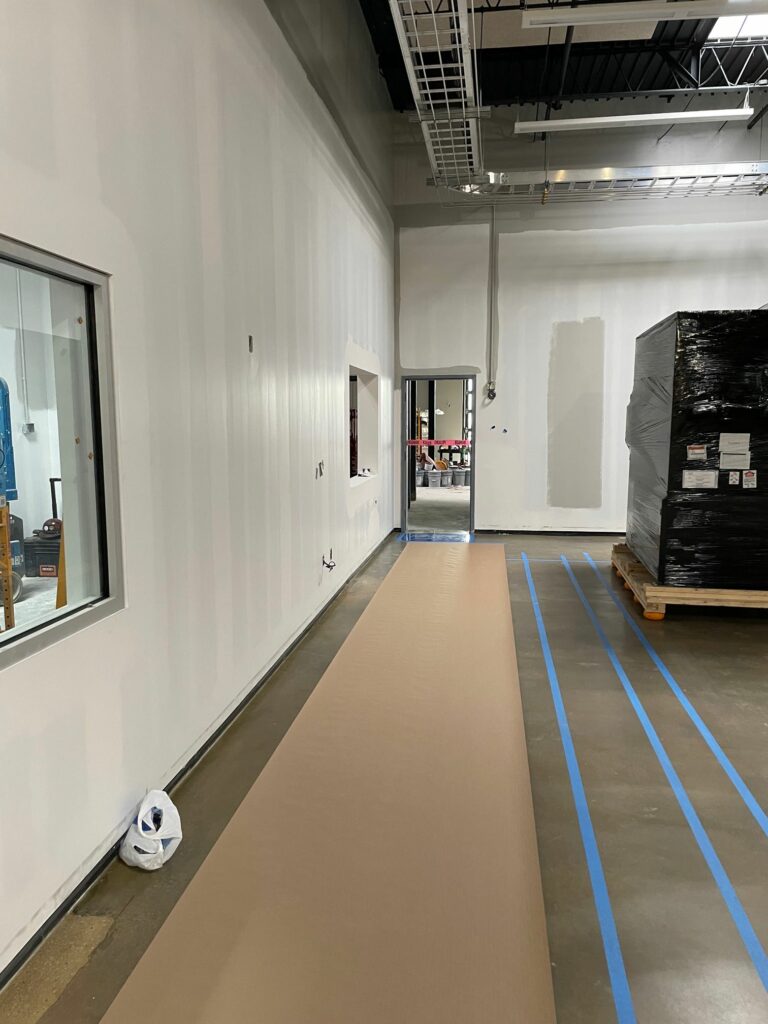

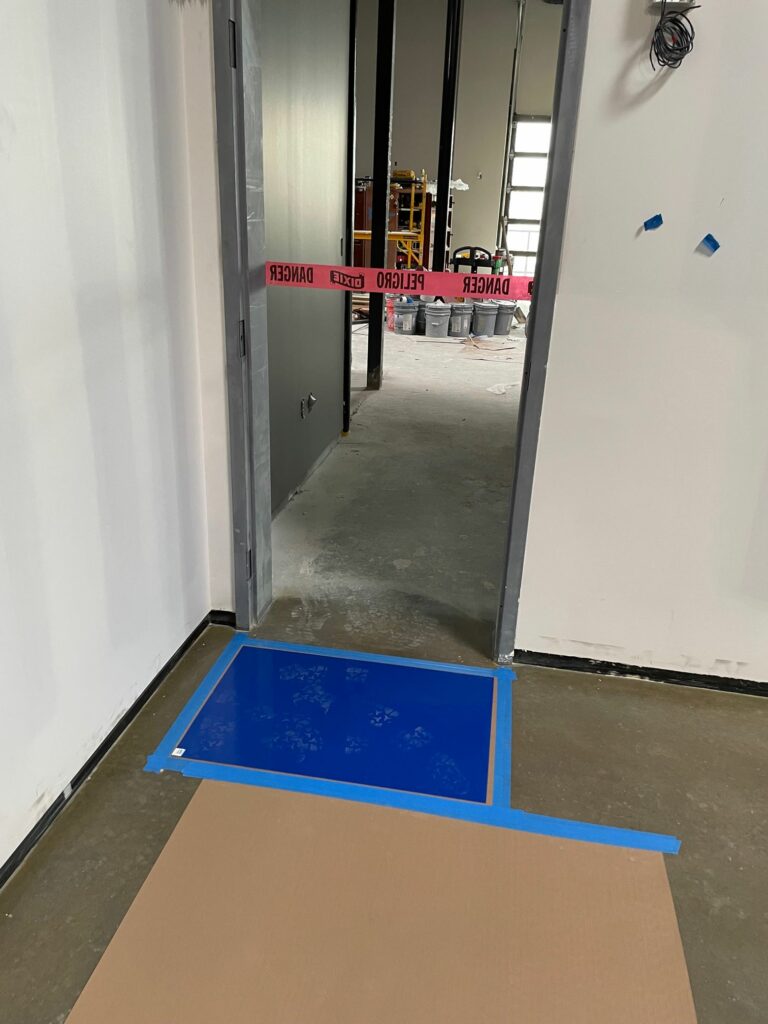

Housekeeping
- Dusting
- Mopping
- Sweeping compounds/wetting agents in use
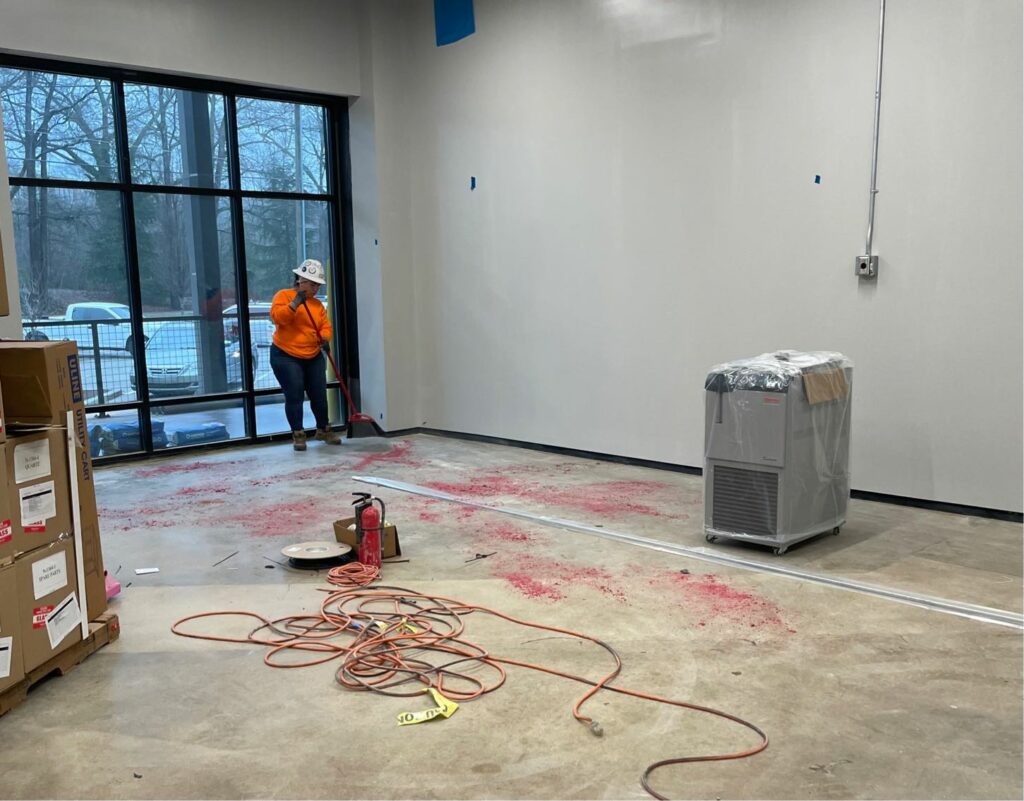

HOUSEKEEPING: Daily sweeping and mopping


Scheduling
- Trades at work in separate areas of building; separate days; off hours
- Photos with date/time stamp can show absorptive materials installed AFTER wet applied products have fully cured



Absorptive Material Protection
- Gypsum board, ceiling tiles, carpet and other absorbent materials shown wrapped and off floor
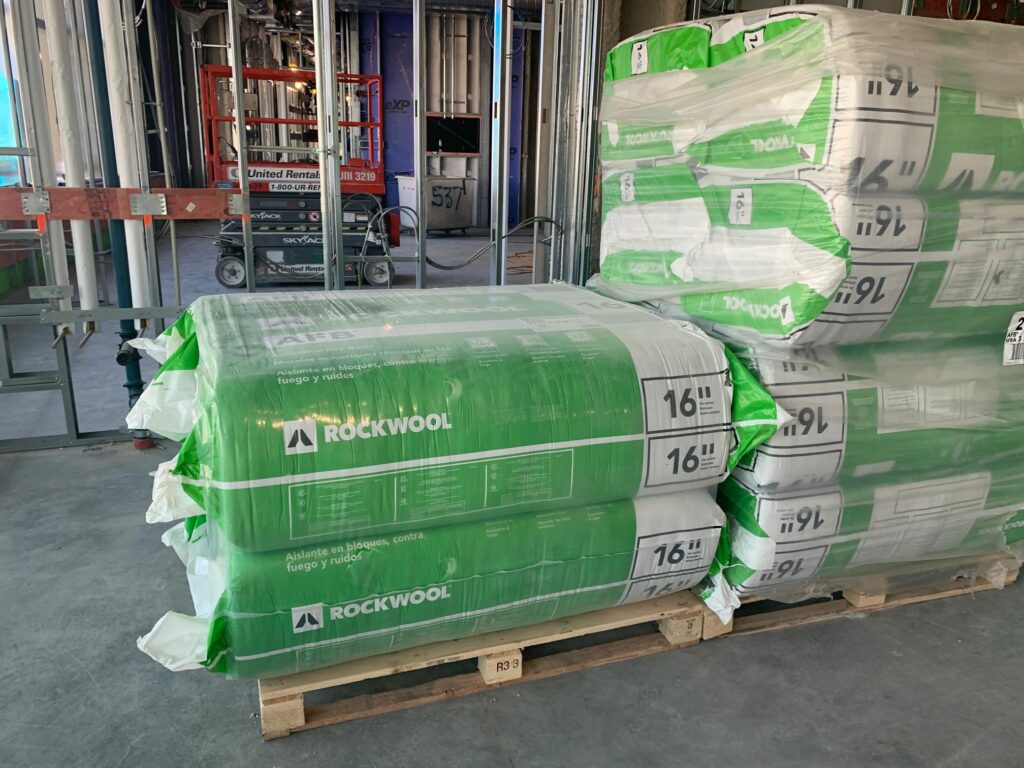

More about IAQ Management:
So, you’re confident in your Indoor Air Quality (IAQ) inspections now – what’s next? If you’ve read our Ultimate Guide to LEED v4 Construction, you’ll know that developing and implementing an indoor air quality (IAQ) management plan for the construction and preoccupancy phases of the building is required to earn the IEQc3 credit – and this template is a great place to start! Download our free Indoor Air Quality Management template here.







